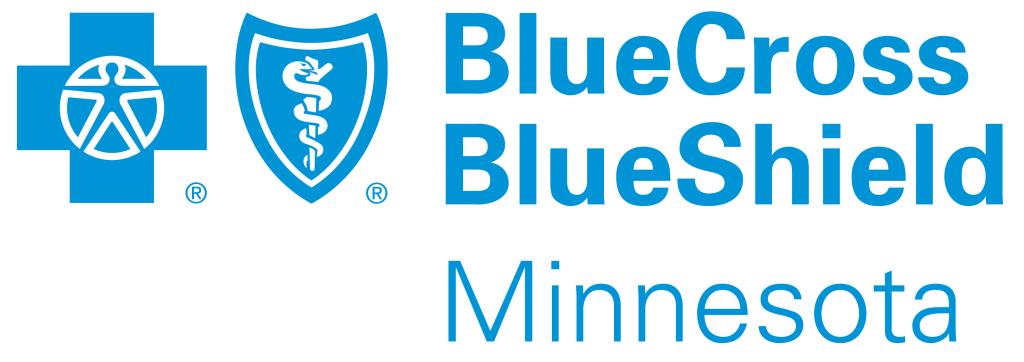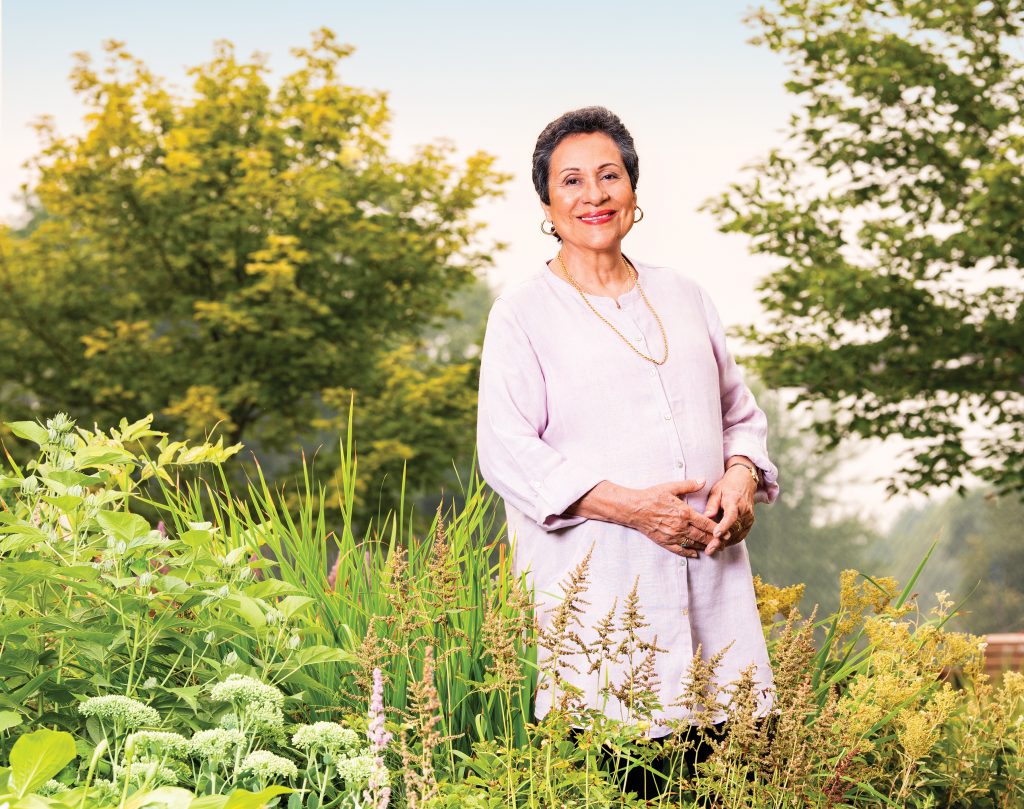Putting together the beautiful pieces of her latest mosaic in her Robbinsdale senior community home, Carmen Berrios uses this creative outlet as a way to manage the stress and anxiety she’s been feeling lately.
“I only focus on the glass, colors, design and my instruments. It gives me pleasure when I stop and look at my work,” she says. “For a while, every worry goes away.”
Last year, Berrios was living in Miami, a COVID-19 hot spot where many medical facilities had put certain services, including mammograms, on hold. Berrios had dutifully scheduled a mammogram each year and a colonoscopy every five years because both cancers occurred in her family. But given the obstacles during the pandemic, she briefly thought about taking a year off from screenings.
She changed her mind when she found out she could make an appointment for both screenings at a clinic five hours away. The drive was worth it. On the same day she received her mammogram, a message appeared in her patient portal asking her to return for additional screenings. “The radiologist and the ultrasound specialist, they were really concerned,” she remembers.
At the age of 71, Berrios was diagnosed with breast cancer. About one in eight women will develop breast cancer in their lifetime, according to the American Cancer Society, making it the most common cancer among women, aside from skin cancers.
Breast cancer is treatable, though, moreso when it’s caught early. That makes regular screenings a must.
Make time for mammograms
Mammogram screenings take an X-ray of the breast and may detect early-stage breast cancer developing before any signs or symptoms are present. By finding the cancer early, it can be treated sooner and could prevent the cancer from spreading.
Receiving a mammogram is still a primary preventive measure for breast cancer that shouldn’t be put off, especially by older women. Age is the most important risk factor for breast cancer, and women between 60 and 69 are most likely to benefit from mammogram screenings, according to the U.S. Preventive Services Task Force.
Sandhya Pruthi, a Breast Health Specialist at the Mayo Clinic in Rochester, cautions women about many organizations releasing different guidelines. She warns it can cause confusion about when to start mammograms or how frequently to receive them.
“Talk with your doctor about your personal values and what is right for you,” she says, adding that women who are unsure should have one every year.
While mammograms aren’t universally recommended for women 75 and older, some doctors recommend women continue to receive them and you should talk to your doctor about their recommendation for you.
Many women were forced to forego mammogram screenings at the beginning of the COVID-19 pandemic as hospitals in Minnesota put them on hold for safety reasons. Other women didn’t feel comfortable or safe attending appointments and have yet to resume, but Pruthi encourages them to restart their annual screenings.
Don’t put off what can be a lifesaving screening. Talk to your doctor about developing a screening plan.
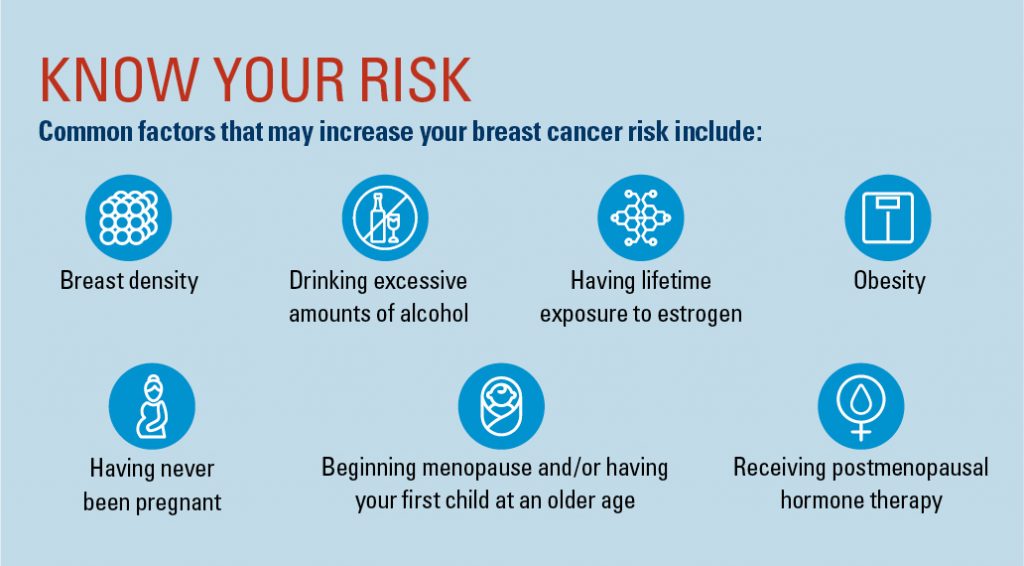
Am I at risk?
Pruthi says that the key to prevention is for doctors to get to know their patient and really understand what their risk factors are.
Prevention and early detection are hallmarks of reducing risk. Performing a risk assessment can help determine what the risks are and whether you’re more at risk than the average woman.
One primary risk is your family history. Doctors estimate that 5 to 10 percent of breast cancers occur because of gene mutations passed through family generations according to the Centers for Disease Control and Prevention. Next to age, this is the second most common risk factor. You should talk to your doctor about your family history and be sure to mention if you have any family members or relatives who were diagnosed with breast cancer.
Another important factor is breast density, which can make screening for breast cancer more difficult. When breasts are viewed on a mammogram, some women have more dense tissue than fatty tissue. Dense breast tissue can be seen in all women. This includes postmenopausal women and women with small breasts. Throughout Berrios’ mammograms over the years, she had dense tissue that made mammograms harder and they often had to be repeated.
Among things like maintaining a healthy weight and exercising 30 minutes every day, there are also Federal Drug Administration (FDA)-approved medications that have been shown to reduce breast cancer risk. These medications include tamoxifen, raloxifene as well as aromatase inhibitors which stop the production of estrogen in postmenopausal women. Talk to your doctor about whether using one of these medications is right for you.
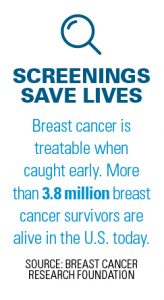 A disparity in screenings
A disparity in screenings
According to research published in the Journal of the National Cancer Institute, women of color made up less than 30 percent of women who had mammograms from January 2019 to July 2020. Mammogram rates in 2020 were lowest among Asian and Hispanic women compared to earlier rates.
There are many reasons that these disparities exist, says Kris Newcomer, the former Executive Director of Firefly Sisterhood, a nonprofit organization that pairs newly diagnosed breast cancer patients with trained, peer mentor survivors of breast cancer. Some of these factors include access to insurance, socioeconomic status, public transportation options, representation in the doctor’s office and the cost of medical care.
Encouraging prevention and providing support to all women is a key part of the Firefly Sisterhood, which Berrios recently joined.
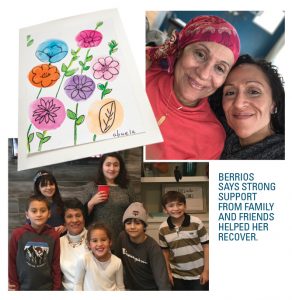
Moving forward
Berrios is back in Minnesota, now five months past her last chemotherapy session. Before then, she had a double mastectomy on her birthday to remove three tumors, an operation she was glad to have.
“I thought it was a really good birthday present because I wasn’t happy knowing I had cancer inside of me,” she says.
Alongside creating mosaics, she’s now volunteering at North Memorial Health Hospital, subbing for teachers in public schools, and is approaching the idea of rejoining the YMCA, which was on pause during the pandemic. Berrios is also looking forward to being paired with other breast cancer patients through Firefly Sisterhood.
“I would love to be there for somebody,” Berrios says. “Being a guide gives me the chance to give back and help somebody else.”

